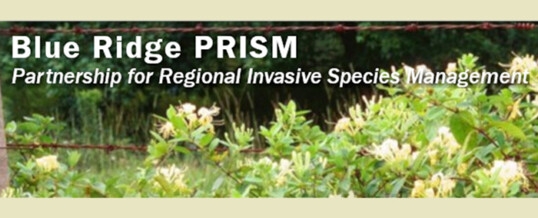IGC Fellows get first-hand experience arbitrating scientific knowledge for policymakers
June 10, 2019

Written by IGC Fellows Rachel Brooks, Hye-jeong Seo, Ariel Heminger, Becky Fletcher, Lauren Maynard, Vasiliy Lakoba
The Virginia Department of Agriculture and Consumer Services (VDACS) regulates harmful plants, or “noxious weeds”, in our state (Code of Virginia, Title 3.2 Subtitle I, Chapter 8). Many of these harmful plants are also invasive species — a part of global change which is accelerating hand-in-hand with climate change and habitat degradation1. Once regulated, the movement of these species is only possible with a permit. Currently, there are only 8 species listed as noxious in Virginia (a small number, especially when compared to California’s 200+ listed noxious weeds).
Virginia regulation requires these species to be non-native and not commercially propagated in Virginia, but how else is this list determined?
It turns out that proposals for noxious weeds can be submitted by anyone (yes, even you can do it!) by completing a questionnaire called the “Noxious Weed Assessment Tool.” This 23-question application ultimately requires processing all current scientific knowledge regarding a plant (similar to a literature review you might be more familiar with) into categories relevant to policymakers. These categories include the plant’s ecological impact, current distribution and abundance, changes in distribution and abundance, economic impacts, and management difficulty.
When we (a group of six IGC Fellows) became aware of the transparency and accessibility of this process, we decided to use this opportunity to apply what we’ve learned so far in the IGC to the “real world.” We partnered with Blue Ridge PRISM, a Virginia non-profit, that has been coordinating efforts to submit noxious weed applications (including applications for the tree-of-heaven Ailanthus altissima and autumn olive Elaeagnus umbellata). They asked that we help complete the application for the non-native plant Persicaria longiseta (Bruijn) Kitagawa, commonly known as the bristly lady’s thumb.

First, we identified all taxonomic synonyms of our plant species and compiled the latest scientific literature (note: having access to scientific publications is a must, and those unassociated with a university likely would face a large paywall and have difficulties successfully filling out this application). Second, we started to process the information and fill out the application form. We soon discovered that these applications can only be thoroughly completed if there is a clear and detailed understanding of a plant’s ecological, economic, and societal impacts. If the research on a species is limited, it is difficult to answer all the questions. Unfortunately for our application, but fortunately for honest science arbitration, there are large gaps in our understanding of this species’ economic impact, leaving a handful of these questions unanswerable (for now).
Regardless of the questions that were unanswerable, we were able to gain insights into the noxious weed listing process and submit our application to VDACS for review. After VDACS receives and confirms that this paperwork is complete, the application is reviewed by Virginia’s Noxious Weed Advisory Committee, an ad-hoc group that includes individuals from universities (including GCC’s Dr. Jacob Barney, who provided us with insights into this process), government agencies, the VA Farm Bureau, and other interest groups. Based on the provided information, this group determines if they support or reject listing the species as noxious, and makes a recommendation to the VA Commissioner of Agriculture, who ultimately has the final say. The application then makes its slow journey (~2 years, including a public comment period) to the governor’s desk to be signed into regulation.
The road to getting a species listed as “noxious” in Virginia can be initiated by anyone but has to be based on available and extensive scientific literature. So, for all of those conducting research that involves a non-native species, remember that your work can have important and long-lasting impacts in all sorts of unexpected places, including helping policymakers determine if a species should be considered “noxious” in their jurisdiction.
1 Bradley, B. A., Blumenthal, D. M., Wilcove, D. S., & Ziska, L. H. (2010). Predicting plant invasions in an era of global change. Trends in ecology & evolution, 25(5), 310-318.






